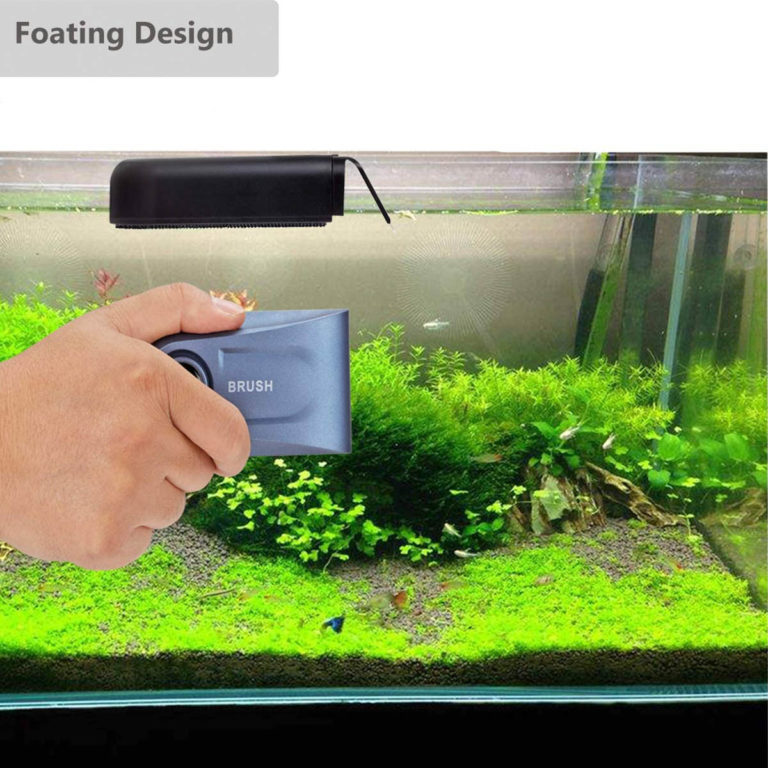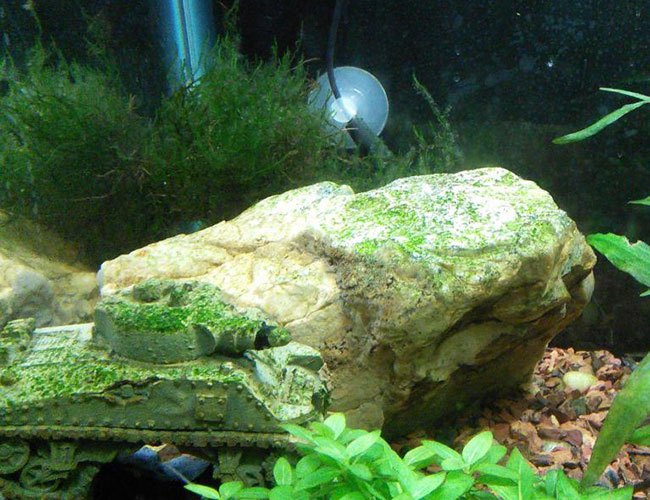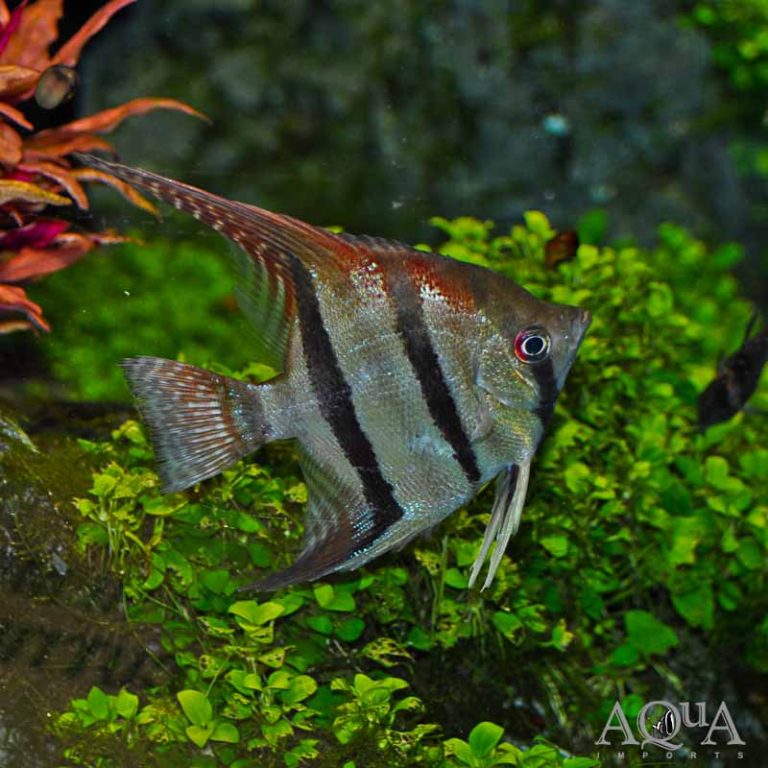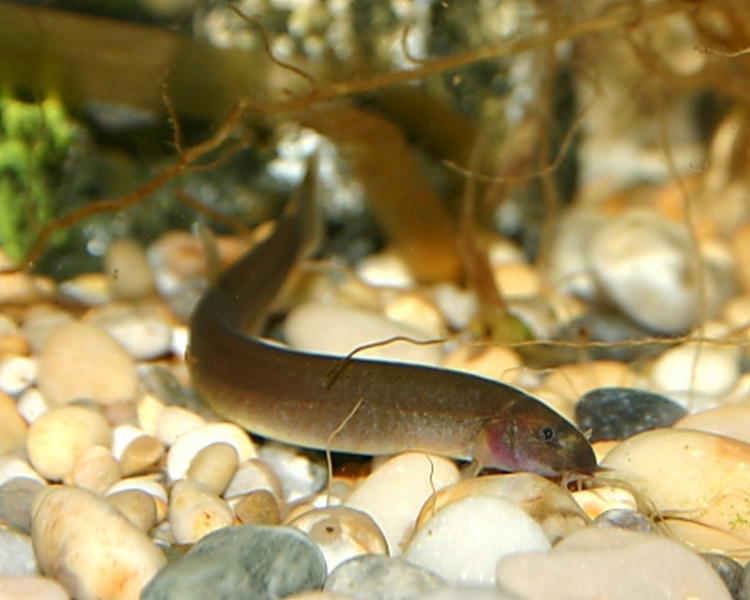How to Easily Remove Algae from Small Aquarium Rocks
To remove algae off small aquarium rocks, scrub them with a brush and water. Algae is a common problem in aquariums, and it can be unsightly if left untreated.
Fortunately, there are simple and effective methods to get rid of algae from small aquarium rocks. By scrubbing the rocks with a brush and water, you can remove the algae buildup. This process helps to maintain a clean and healthy environment for your aquarium inhabitants.
In this article, we will discuss the steps you can take to successfully remove algae from your small aquarium rocks, ensuring that your aquarium remains a beautiful and thriving ecosystem.

Credit: www.hygger-online.com
Understanding The Problem
Whether you’re a seasoned fish enthusiast or just starting out with your first small aquarium, dealing with algae growth on the rocks can be a frustrating problem to tackle. Not only does excess algae look unsightly, but it can also harm the overall health of your aquatic ecosystem.
In this section, we will dive into the key factors contributing to algae growth on small aquarium rocks, helping you gain a better understanding of the problem at hand.
Factors Contributing To Algae Growth On Small Aquarium Rocks:
- Excessive lighting: Algae thrive in the presence of light, especially when it’s too much or inconsistent. If your aquarium is exposed to high levels of natural or artificial light for prolonged periods, it can trigger algae growth on the rocks.
- Nutrient imbalance: Algae require nutrients like nitrogen and phosphorus to flourish. An excess of these nutrients, often caused by overfeeding your fish or inadequate filtration, can create an ideal environment for algae to grow on the rocks.
- Poor water circulation: Lack of proper water flow within the aquarium can contribute to algae growth on the rocks. Without consistent circulation, nutrients tend to accumulate near the rocks, providing a perfect breeding ground for algae.
- Inadequate tank maintenance: Neglecting regular tank maintenance, such as infrequent water changes or insufficient cleaning, can lead to the buildup of organic matter and waste, which becomes a food source for algae.
- Presence of fish waste: Fish waste, including uneaten food and feces, can release excess nutrients into the water, fueling algae growth. Proper feeding habits and routine waste removal are crucial to prevent this issue.
By understanding these key factors, you can address and mitigate the conditions that promote algae growth on small aquarium rocks. In the next section, we will explore effective methods to overcome this problem and keep your aquarium rocks algae-free.
How To Easily Remove Algae From Small Aquarium Rocks
Algae growth in aquariums is a common problem that every fish keeper has to deal with at some point. While it may seem daunting to remove algae from small aquarium rocks, it can be done with the right technique and equipment.
In this guide, we will walk you through the step-by-step process of removing algae from small aquarium rocks, ensuring a clean and pristine environment for your aquatic friends.
Step 1: Gathering The Necessary Equipment
Before diving into the cleaning process, it is essential to gather all the required equipment to make the task more efficient. Here’s what you’ll need:
- Algae scraper or brush: Choose a tool specifically designed for aquarium use, such as an algae scraper or brush. These tools are gentle on rocks while effectively removing algae.
- Bucket: Have a clean bucket on hand to transfer the rocks while cleaning.
- Gloves: Wearing gloves will protect your hands from any chemicals or irritation.
- Water: Have a supply of dechlorinated water ready for rinsing the rocks after scrubbing.
Step 2: Removing The Rocks From The Aquarium
Now that you have the necessary equipment, it’s time to remove the rocks from the aquarium. Follow these simple steps:
- Unplug any electrical equipment: Before reaching into the aquarium, ensure that all electrical equipment, such as heaters and filters, are turned off and unplugged.
- Use a fish net or your hands: Carefully lift the rocks using a fish net or your hands, ensuring not to disturb the other inhabitants of the tank.
- Transfer rocks to the bucket: Gently transfer the rocks into the bucket, making sure not to drop or damage them in the process.
Step 3: Scrubbing The Algae Off The Rocks
With the rocks safely removed from the aquarium, it’s time to tackle the stubborn algae. Follow these guidelines to ensure effective removal:
- Start with a dry brush: Begin by using a dry algae scraper or brush to remove any loose and dry algae from the rocks.
- Wet the rocks: Dip the rocks into the dechlorinated water or use a spray bottle to moisten them before further cleaning.
- Scrub gently: With the wet rocks, use the algae scraper or brush to scrub away the remaining algae. Be gentle to avoid damaging the rocks or disturbing the beneficial bacteria on the surfaces.
Step 4: Rinsing And Inspecting The Clean Rocks
After successfully scrubbing away the algae, it’s time to rinse and inspect the clean rocks before returning them to the aquarium. Follow these final steps:
- Rinse the rocks thoroughly: Use the dechlorinated water to rinse the rocks, ensuring all the algae debris is removed.
- Inspect for cleanliness: Examine the rocks closely to make sure all traces of algae have been removed. If needed, repeat the scrubbing process.
- Let the rocks dry: Allow the rocks to air dry completely before placing them back into the aquarium.
By following these simple steps, you can easily remove algae from small aquarium rocks and maintain a clean and healthy aquatic environment for your fish. Regular maintenance and proper cleaning techniques will help prevent future algae growth and ensure a visually appealing aquarium for you and your aquatic companions.
Preventing Algae Regrowth
Using Algae-Resistant Rocks
Algae growth on small aquarium rocks can be a persistent problem for many fishkeepers. To combat this issue, one effective solution is to choose algae-resistant rocks for your aquarium setup. These rocks are specially designed to inhibit the growth of algae, making maintenance much easier.
Some key points to consider when using algae-resistant rocks include:
- Selecting the right type of rocks: Look for rocks that have a smooth surface, which makes it harder for algae to attach and grow. Avoid porous rocks that can absorb nutrients and promote algae growth.
- Researching suitable rocks: Different types of algae-resistant rocks are available, such as lava rocks and artificial resin rocks. Research and choose the type that best suits your aquarium needs.
- Cleaning the rocks properly: Before adding the rocks to your tank, make sure to clean them thoroughly to remove any dirt or debris. This helps create a healthy environment and prevents algae from thriving.
- Regularly inspecting for algae growth: Even with algae-resistant rocks, it’s important to keep an eye out for any signs of algae growth. Perform routine inspections and remove any algae promptly to prevent it from spreading.
Implementing Proper Aquarium Maintenance Routines
Preventing algae regrowth in your aquarium requires consistent and proper maintenance routines. Here are some important steps to follow:
- Regular water changes: Performing regular water changes helps maintain water quality and removes excess nutrients that algae thrive on. Aim for weekly water changes, replacing around 10-20% of the water.
- Scrubbing algae off rocks: Even with algae-resistant rocks, algae may still accumulate over time. Use a soft brush or sponge to gently scrub away any algae growth on the rocks during water changes.
- Vacuuming substrate: Detritus and uneaten food can contribute to algae growth. Regularly vacuum the substrate to remove these particles and prevent the buildup of organic matter.
- Pruning plants: If you have live plants in your aquarium, ensure that they are healthy and well-maintained. Regularly trim any dying or decaying parts to prevent nutrient release and algae growth.
- Monitoring nutrient levels: Test the water regularly for ammonia, nitrite, and nitrate levels. High levels of these nutrients can fuel algae growth. Take appropriate measures to keep them in balance.
Ensuring Proper Lighting And Water Conditions
Proper lighting and water conditions are essential in keeping algae growth at bay. Consider the following points:
- Avoid excessive lighting: Algae thrive in the presence of strong or prolonged light. Use a timer to ensure that aquarium lights are on for a maximum of 8-10 hours per day. This helps provide sufficient light for your aquatic plants without promoting excessive algae growth.
- Balance nutrients for plants: Maintain a balanced nutrient ratio for your plants, as an imbalance can contribute to algae growth. Adjust fertilization and nutrient dosing based on the needs of your plants and the conditions of your aquarium.
- Monitor and adjust water temperature: Some types of algae thrive in warmer water. Keep the water temperature within the recommended range for your fish species. This can help control algae growth and maintain a healthy aquatic environment.
- Regularly clean filters: Algae can also accumulate in filters and impede their efficiency. Make it a habit to clean or replace filter media regularly to prevent the buildup of algae and other impurities.
By implementing these preventive measures, you can greatly reduce the likelihood of algae regrowth in your aquarium. Maintain a consistent schedule for cleaning and maintenance, and enjoy a beautiful and vibrant aquarium display. Your fish will thank you!
Frequently Asked Questions For How To Algae Off Small Aquarium Rocks
How Do I Remove Algae From Small Aquarium Rocks?
To remove algae from small aquarium rocks, scrub them with a soft brush or toothbrush dipped in vinegar. Rinse thoroughly afterwards.
Can I Use Bleach To Clean Small Aquarium Rocks?
Yes, you can use bleach to clean small aquarium rocks. However, make sure to rinse them thoroughly afterwards to remove any residue.
What Is The Best Way To Prevent Algae Growth On Small Aquarium Rocks?
To prevent algae growth on small aquarium rocks, ensure proper water circulation and lighting, limit nutrient levels, and regularly clean and maintain the aquarium.
Should I Boil Small Aquarium Rocks To Remove Algae?
Boiling small aquarium rocks is not recommended as it may damage them. It is best to use other methods like scrubbing with vinegar or hydrogen peroxide.
Conclusion
Keeping your small aquarium rocks free of algae is essential for maintaining a healthy aquatic environment. By following the steps outlined in this blog post, you will be well-equipped to tackle the issue of algae growth. Regular cleaning and maintenance, such as scrubbing the rocks, removing any excess debris, and maintaining proper water conditions, will help prevent algae from taking hold.
Additionally, incorporating natural algae-eating creatures, such as snails or fish, can provide an effective solution. Remember to monitor your aquarium for any signs of algae growth and take action promptly to keep it under control. With these strategies in place, you can enjoy a clean and vibrant aquarium that showcases your aquatic pets and plants.
Happy aquarium keeping! Word count: 149 words.






